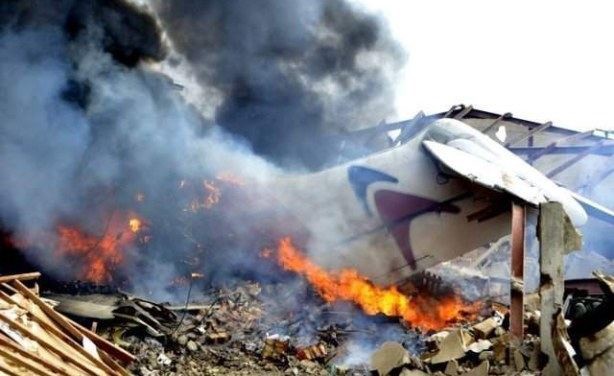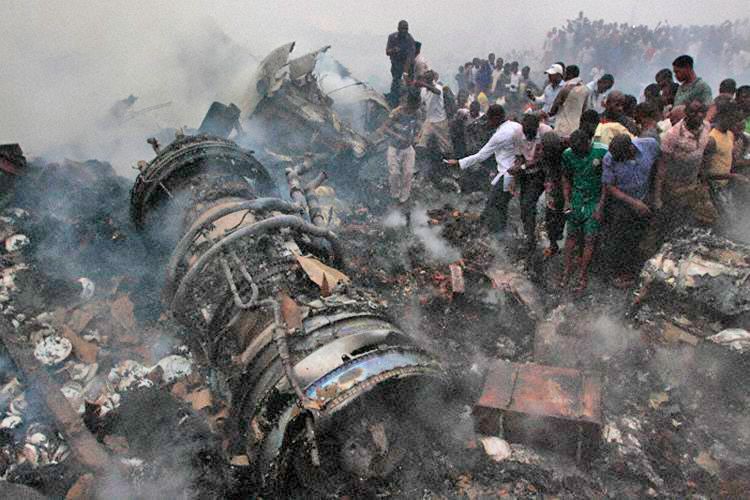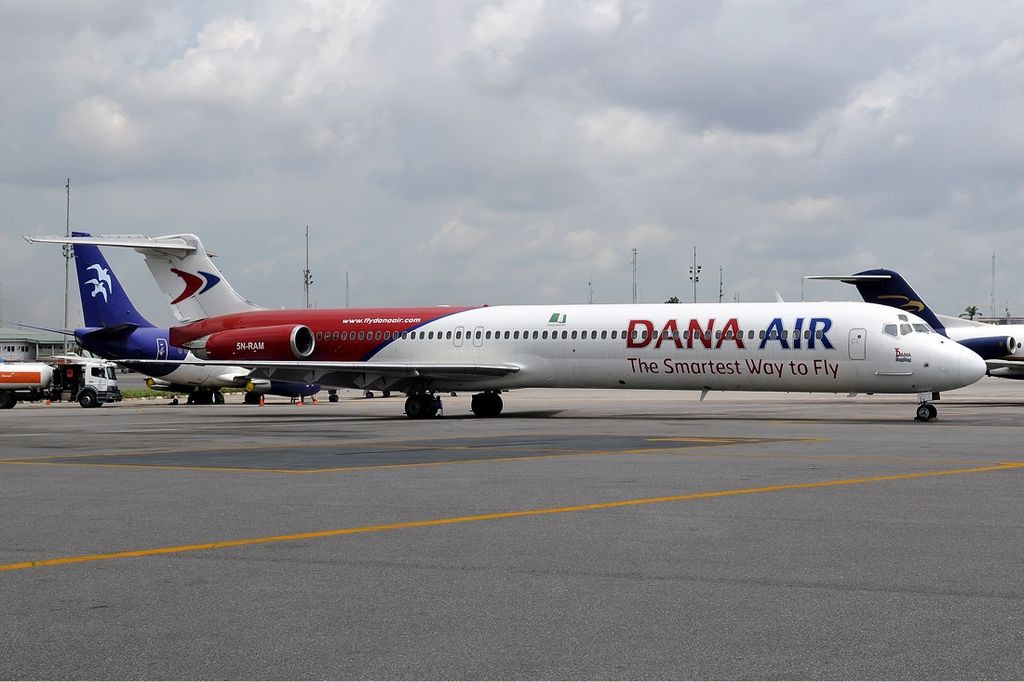News
SHOCKER! How Dana Airline Flight 992 Crashed And Over 160 People Died Because Of Carelessness
The search for bodies and, hopefully, survivors in Nigeria’s most populated city continued through the night and into Monday, hours after an airliner crashed killing all 153 passengers and crew on board and at least 10 people on the ground.

Mohammed Sani Sidi, director-general of the West African nation’s National Emergency Management Agency – who had conceded late Sunday there were no survivors on the Dana Air flight – said early Monday that individuals in the Lagos neighbourhood when and where the jet hit also had died.
More than 80 bodies had been recovered from the crash site by 1 a.m. (8 p.m. Sunday ET), Sidi said, 10 of which belonged to people who were in the residential area. He added that, if there are people still buried under the rubble, he doubts that they are still alive.
Despite the darkness, potential instability of buildings and crowd-control challenges, the emergency official promised rescue workers, first responders and security personnel will remain on-site looking for more people from the plane and surrounding area.
“We will not leave until everybody is recovered,” Sidi said.
The Dana Air flight from Abuja crashed at 3:43 p.m. (10:43 a.m. ET) into a building in the Iju Ishaga neighbourhood just over 4 kilometers (2.5 miles) north from the edge of the city’s airport, according to the Nigerian Civil Aviation Authority.
Sidi said that one building was “totally destroyed,” though several others in the densely populated area were affected as well. The state-run Voice of Nigeria news organization reported that a manufacturing building, a block of six apartments and a church suffered at least some damage.
Fires broke out in at least three buildings after the crash, said Labaran Ahmed, a rescue officer with the national emergency agency.
The smell of jet fuel was evident in the air, yet that didn’t stop hundreds and hundreds of people from congregating around the crash site. Video from the scene showed people clambering on the wreckage – including parts of the fallen plane – and working together to hold up what appeared to be a fire hose.

For hours, the area around the crash site wasn’t cordoned off as the mass of people packed the area, making if difficult to move – including for rescue personnel.
“There were so many people, you had to push through people to walk,” recalled Pearl Ezeokeke, who was at the scene.
Even nine hours after the plane slammed into the earth, Sidi described “crowd control (as a) big challenge.” But by 1:30 a.m. Monday, the Nigerian official insisted the situation was “all controlled” and that the greatest difficulty then was sifting through the heavy debris.
Femi Green-Adebo described how, in the middle of an otherwise nice Sunday afternoon, he heard a “loud explosion” and then ran outside and saw “smoke.”
’It was so hot, we couldn’t get close,” he told reporters. ‘I just kept thinking about the people, if they’re as anyone in there.’
The fires made it difficult for people to see what was happening, as well as to breathe. Orange flames shot up in spots as late as 7 p.m. Sunday. Five hours later, Sidi said fires were no longer burning and the scene was under control.
“There was … so much (smoke) that, my eyes, I couldn’t see beyond where I was standing,” Ilori Olayide told reporters.
Amongst the crowd of civilians, witnesses reported seeing police, firefighters and security personnel. Patrick Abbah, from the national emergency management agency, said, “Everybody is present – it’s all hands on deck.”

There were no large lights on-site to add the rescue efforts as the sun went down. But over the subsequent hours, lights were up and illuminating the crash site, according to Sidi.
President Goodluck Jonathan declared three days of national mourning and ordered “the fullest possible investigation” after the crash.
A statement from his office noted that the incident came the same day that two church bombings in northern Nigeria killed at least 15 people and wounded 38 others, according to Red Cross spokesman Andronicus Adeyemo.
“President Jonathan assures air travellers in the country that every possible effort will be made to ensure that the right lessons are learned from the tragic loss of valuable lives in today’s plane crash and that further measures will be put in place to boost aviation safety,” the statement from Jonathan’s office said.
Aeroplane disasters are nothing new for Nigeria. The deadliest came in July 1991, when all 261 onboard a Nigerian Airways airliner died after its landing gear caught fire shortly after takeoff in Saudi Arabia en route to Nigeria, and the plane went down. About 225 people were killed in two crashes that occurred within two months of each other in late 2005.
And on Saturday, a Boeing 727 cargo plane operated by Nigerian-based Allied Air took off from Lagos and landed at Kotoka International Airport in Accra, Ghana. But it didn’t stop on the runway, barreling through a fence and onto a street, where it hit a passenger bus and killed 10 people, officials said. Ghana Aviation Authority sources said they suspect brake failure may have contributed to that crash.

Dana Air, the airline behind the flight involved in the next day’s crash, began operations in November 2008. The company has since become “one of Nigeria’s leading airlines,” according to its website.
While no specifics have been released about the plane that crashed, Dana Air said its fleet consists of Boeing MD-83 aircraft. Boeing’s website notes that such planes can carry between 155 and 172 passengers, cover up to 2,504 nautical miles and have a fuel capacity of 7,000 gallons.
Follow us on social media:-

 Celebrity Gossip & Gist1 day ago
Celebrity Gossip & Gist1 day ago“The money wey dem pay me don expire” – Moment Burna Boy stops his performance at the Oando PLC end of the year party (Video)
-

 Economy1 day ago
Economy1 day agoGoods worth millions of naira destroyed as fire guts spare parts market in Ibadan
-

 Celebrity Gossip & Gist3 hours ago
Celebrity Gossip & Gist3 hours agoMoment stage collapses on Odumodublvck during concert performance (Video)
-

 Economy2 hours ago
Economy2 hours agoPresident Tinubu cancels Lagos engagements in honor of food stampede victims




